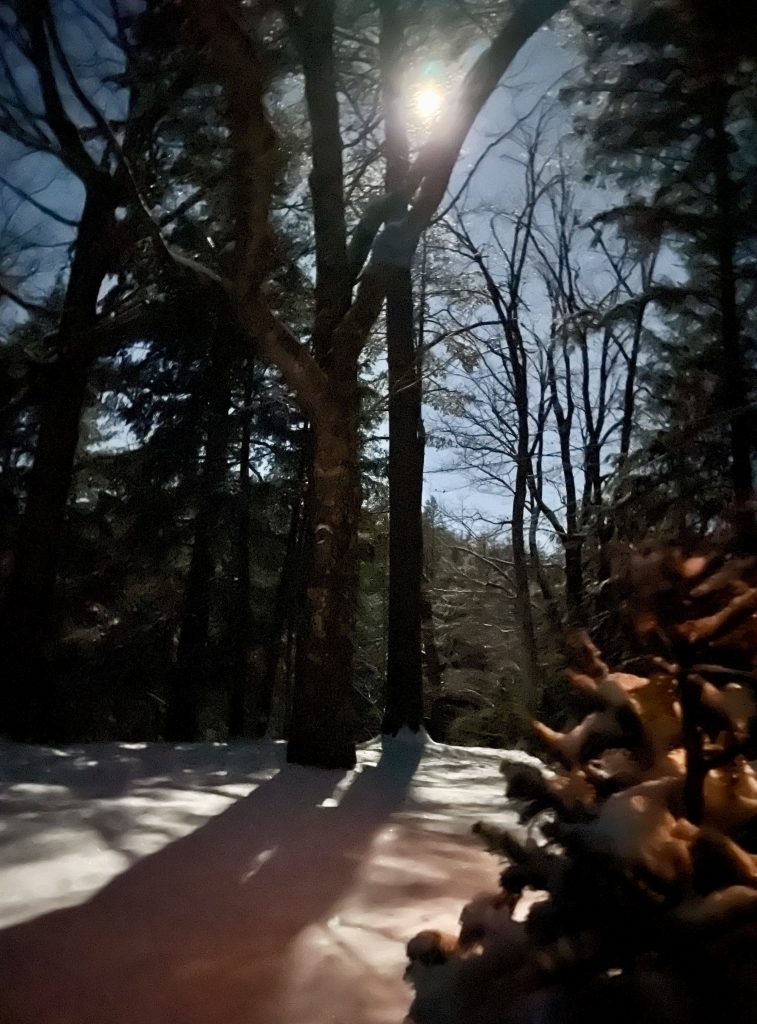Dec 21, 2021 The Reflective Practitioner: Celebrating the Winter Solstice with Intentional Reflection and Planning
Today marks the Winter Solstice, a day that has been a time for celebration, reflection, and planning for days ahead across cultures and generations. Over the past week, I’ve been awakening before dawn, as I often do this time of year. But, instead of jumping out of bed to start the day’s work, I’ve been quietly enjoying the moonlit shadows on the snowcovered trees in our yard or gazing at our holiday lights and just sitting in solitude. Instead of scrolling social media or writing to-do lists, I sit quietly, embracing the pre-dawn tranquility that is like no other time of year.
I am taking my cue from nature and thousands of years of tradition during this winter solstice week and settling in for some self-care and inner focus. This morning during that reflective time, I remembered a series of articles I wrote ten years ago about embracing and cultivating these quiet moments, practicing the art of self-reflection both personally and professionally, and maintaining the practice all year round. This three-part series from December 2011 and January 2012 still seems relevant today as we celebrate the Winter Solstice, traditionally a time for looking at renewal, recharging, and reflection.
The first article from December 2011, Embracing the Quiet and Taking Time to Reflect, focuses on making the most of this time of year to recharge and explores the “why” behind practitioner self-reflection: Those in the education field spend so much focusing their energy outwardly. We spend our days’ planning, preparing, meeting, teaching, and implementing. So many of us work in fast-paced environments and spend a lot of time rushing from one place to the next or working with one group right after another. So often, when one program or class ends, we move on to the next without much time spent on reflection about successes or the lessons we could be taking away to improve our practice.
The philosophy of experiential education recognizes reflection as the key to moving learning forward and creating lasting and meaningful lessons. We seek new tools and ideas to facilitate reflective practice with our students or groups, but how often do we practice what we preach and take time for self-reflection? To read more, click here:
The second article: The Reflective Educator/Facilitator Part Two: Meaningful Self-Reflection and Record-Keeping to Improve Your Practice, explores how the ongoing gathering of reflective materials such as quotes, student work, and participant testimonials can help you “tell the story” of your program or class and monitor progress and successes along the way. In addition, maintaining an ongoing record of lesson plans and activity sequences can be very useful in planning future programs or lessons. Some of our best tools and strategies are developed “on the fly” in those moments of spontaneous creativity that occur when a lesson plan goes awry, or we adapt the use of materials or rules of a game and create something new or better. If we don’t have a systematic way to capture these teachable moments, they could be lost. To read more, click here.
The third article, “Personal Planning and Reflection,” focuses on the value of taking time to reflect on the “bigger picture” of your practice as an educator or facilitator including your personal and professional goals, accomplishments, and next steps, as well as questions to ask yourself about your ongoing practice and future goals. To read more, click here.
What are your experiences and thoughts about intentionally slowing down during the winter solstice and planning and preparation for the new year? Comment here or email me at jen@experientialtools.com to include them in an upcoming post.



No Comments